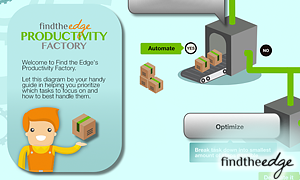 Have you ever felt like nodding off while listening to a presentation? If so, you’re not alone. Research suggests an incredible 97% of managers have struggled to stay awake during a presentation.
Have you ever felt like nodding off while listening to a presentation? If so, you’re not alone. Research suggests an incredible 97% of managers have struggled to stay awake during a presentation.
If you're presenting to your boss, a client, an investor or a shareholder – can you afford to take the chance of them drifting off while you're speaking?
One of the main reasons the audience switches off is because the presentation is boring. I know this is stating the obvious somewhat, but it's a common problem.
If you think back to when you were at school, the worst lessons were probably those that were the most boring, and the best were those that were really interesting and engaging.
Business presenting is exactly the same.
People rarely set out to give boring presentation (although some do…), so how come so many of them are unavoidably dull?
If you type the word ‘boring' into a thesaurus, some of the synonyms you'll get are:
‘Monotonous, dreary, uninteresting, tedious, dry, insipid, wearisome and mind-numbing.' I’m sure you'd be able to add several more to that list.
Most people don’t realise that all that's required to make their presentations more engaging is a little bit of tweaking.
Two common problems
Firstly, people who are boring usually don’t know they’re boring. This is often simply because no-one has the courage to tell them.
It’s deemed to be more polite to say “that was great, thank you” rather than to give meaningful feedback that will help them improve.
Secondly, even if they do know they’re boring, they often don’t know how to tweak their presentations to make them more interesting.
Don't be fooled into thinking it’s just about making the PowerPoint brighter and more whizzy! I know companies that have spent tens of thousands of pounds on getting ‘cutting edge slides.' It doesn't matter how good they look – pretty slides won’t magically transform a boring presentation into an interesting one. It just means that the ‘Death by PowerPoint' is a bit more colourful.
(I’m not against using PowerPoint, by the way – it can be a very powerful tool when used in the right way. Unfortunately, in my experience, that doesn’t happen very often).
Many tweaks can be made to your style that will help you create outstanding presentations.
Here are three of the easiest ones to start with, which can have an immediate impact:
1. Make sure that you are interested in, and enthusiastic about, what you are ‘presenting'
This may sound a bit odd, but if you are performing the same presentation again and again – e.g. to potential clients at networking meetings – it is likely to become boring for you.
If you are bored then you will be boring. This will rub off on your audience, and soon enough, they’ll be bored too.
Find something new and different each time you present. Find a different angle, or a couple of different facts that you can include to tweak the presentation without changing the overall content.
This keeps it fresh and interesting for you, and therefore your audience too.
2. Avoid ‘audience overload' by reducing the amount of information you provide
Most people overestimate the amount of information humans can take in, over a given time period.
The brain has a limited time span for concentration, particularly when listening passively to a presentation. This limits the amount of information that can be absorbed meaningfully.
So talking for more than 20-25 minutes at a time, with no audience participation, is counterproductive. It simply means that most of the presentation won’t register with the audience.
Pick out three key pieces of information that you want the audience to ‘get,' and then concentrate on delivering those three key points in five different ways during the presentation.
3. Find out about your audience so you can pitch at the right level
When presenting, it’s easy to get so caught up in what you want to talk about that you forget about the audience.
Whoever your audience is – a prospective client, a procurement panel, or a group at a networking event – take some time to find out about them. Learn where they are in terms of their knowledge and experience of the topic, and then use that as your starting point.
These may sound like obvious points, but only a small number of ‘presenters' actually apply them. If you do, you'll find they make all the difference to your presentations, and your audiences are never left fighting the urge to sneak a quick nap in while you're talking.





